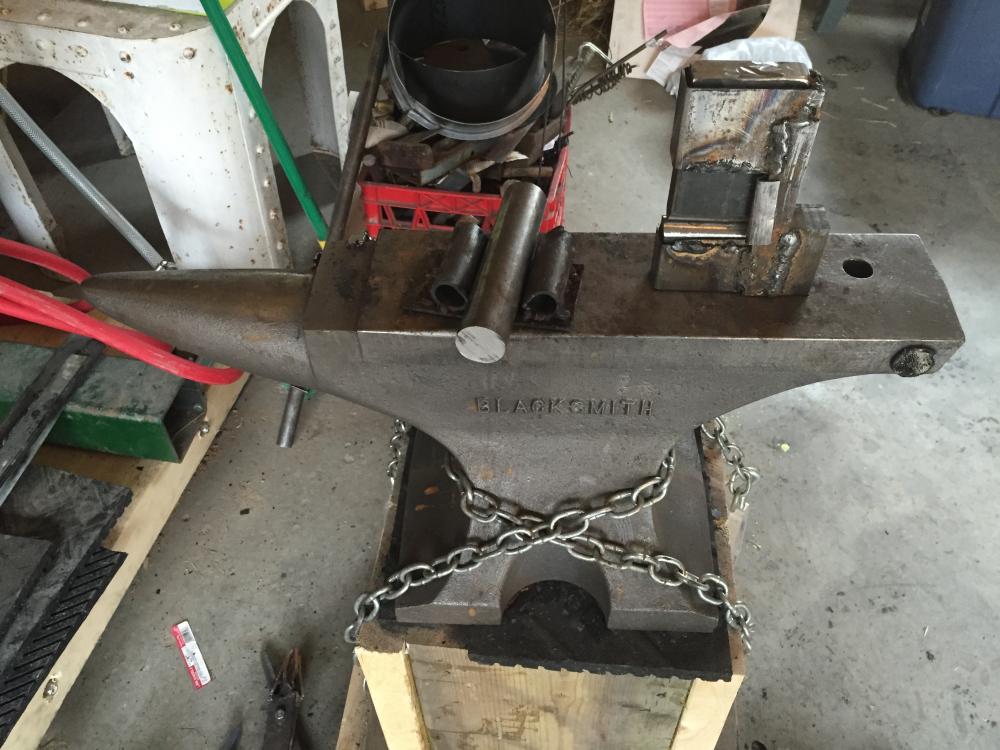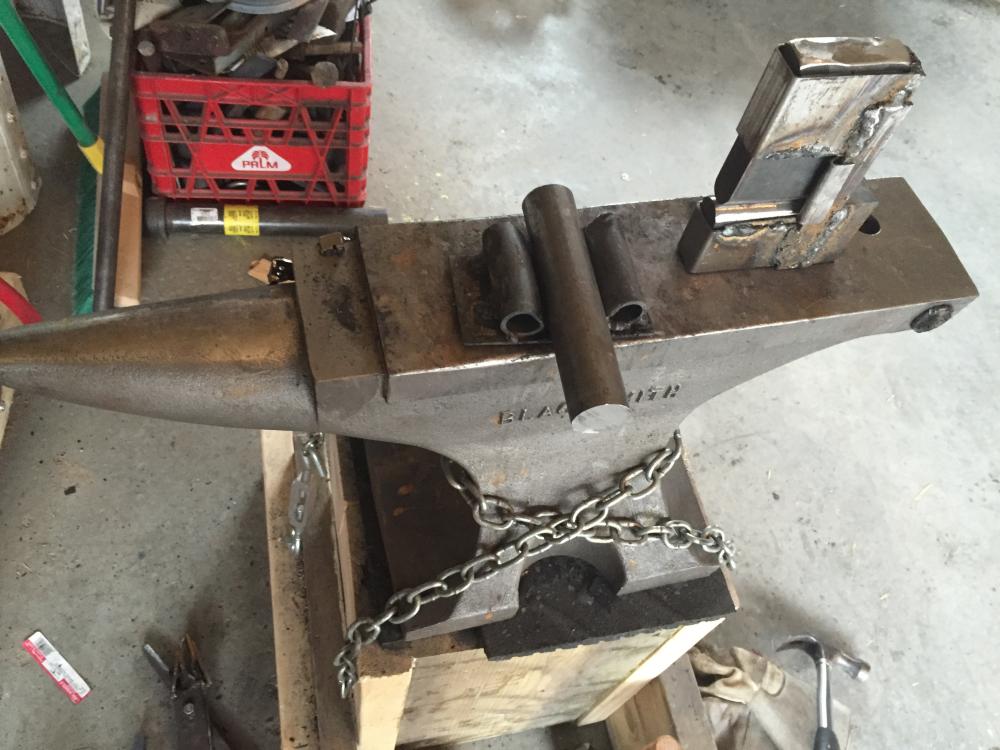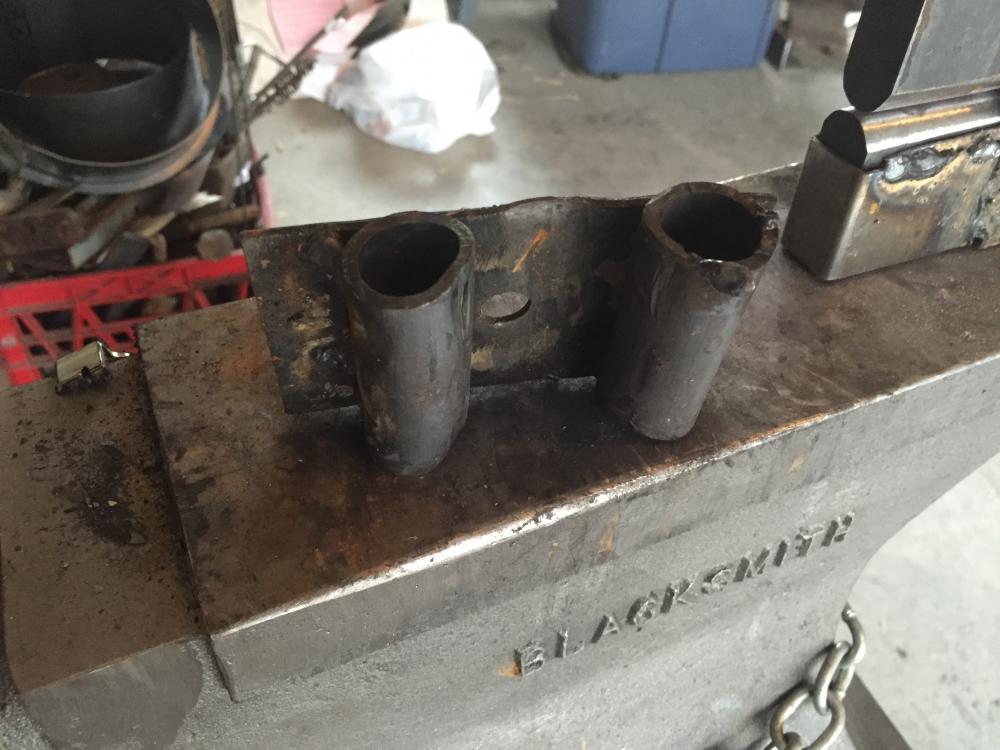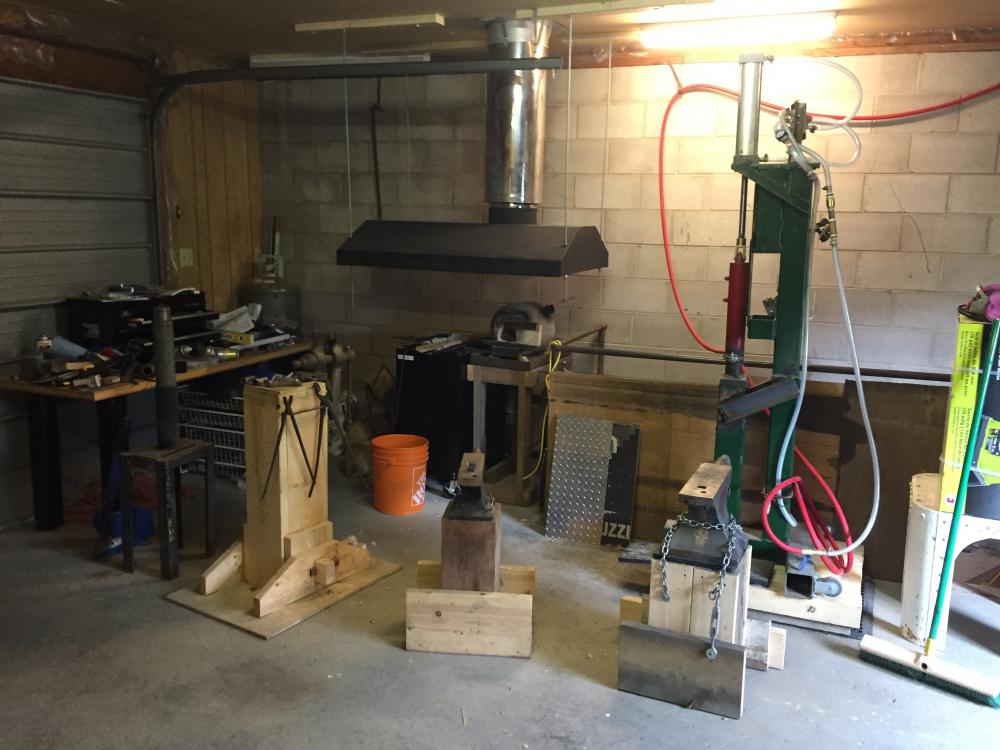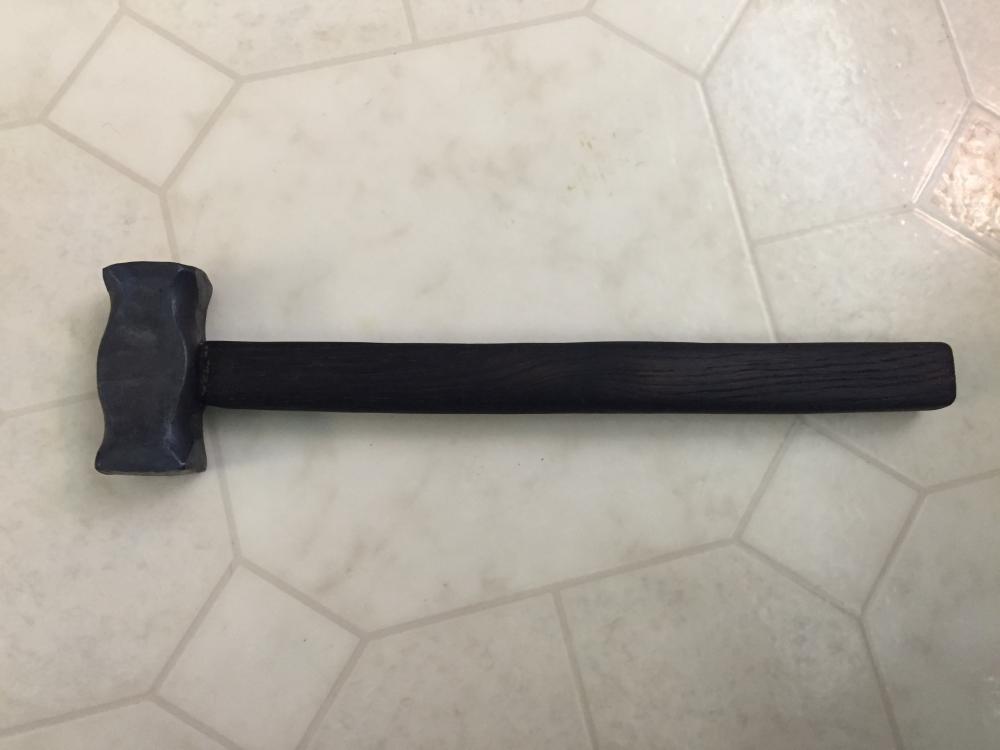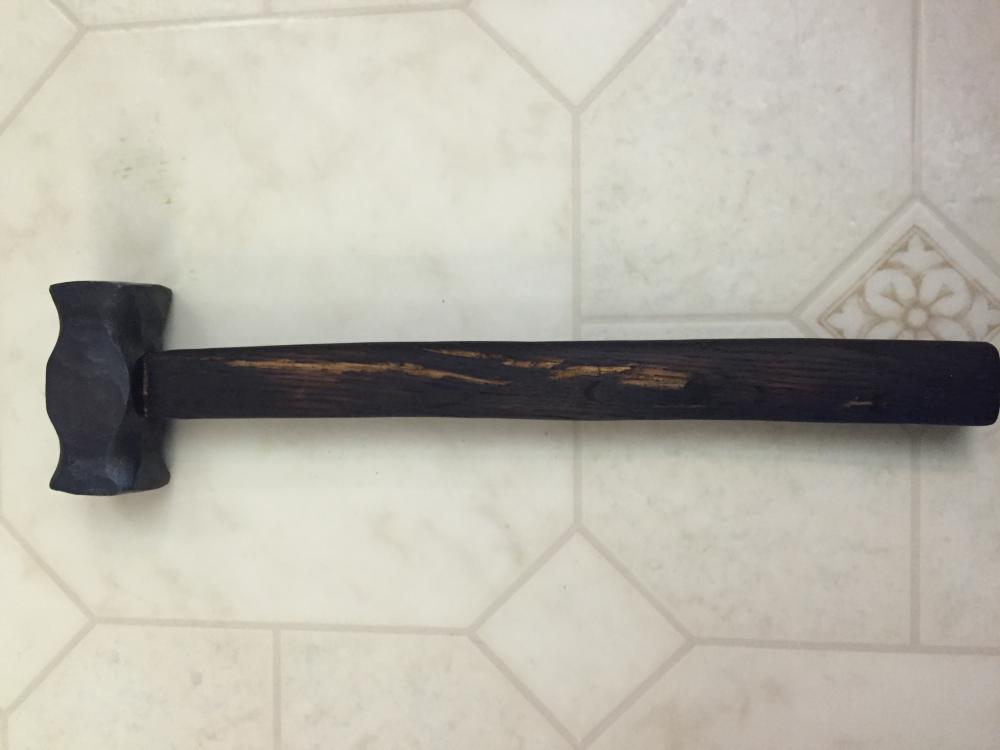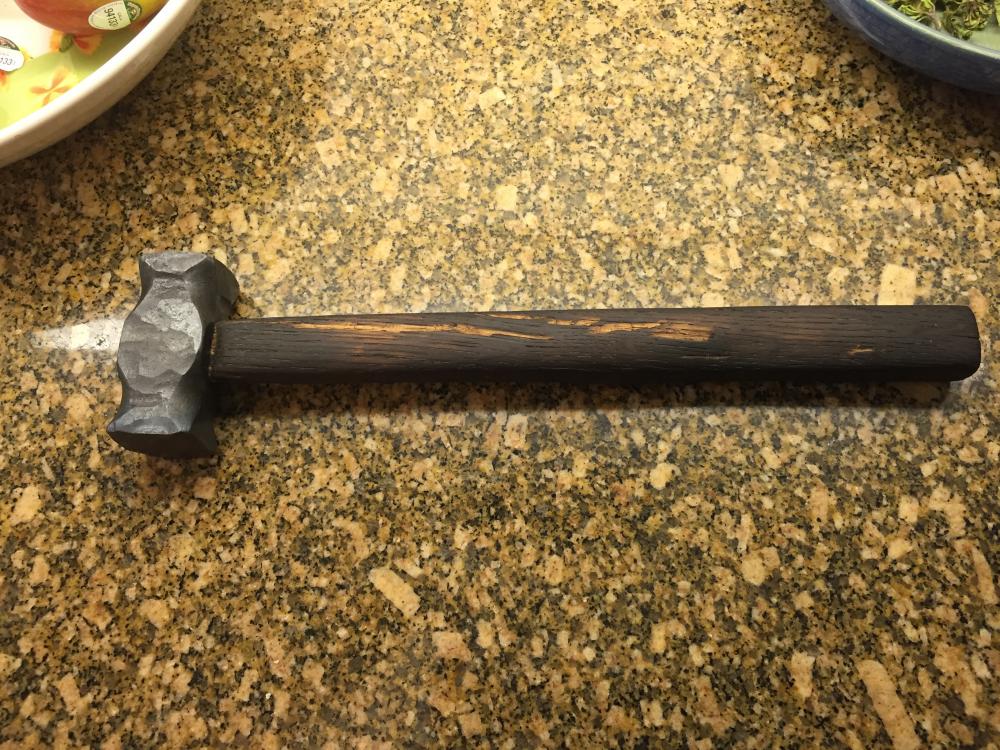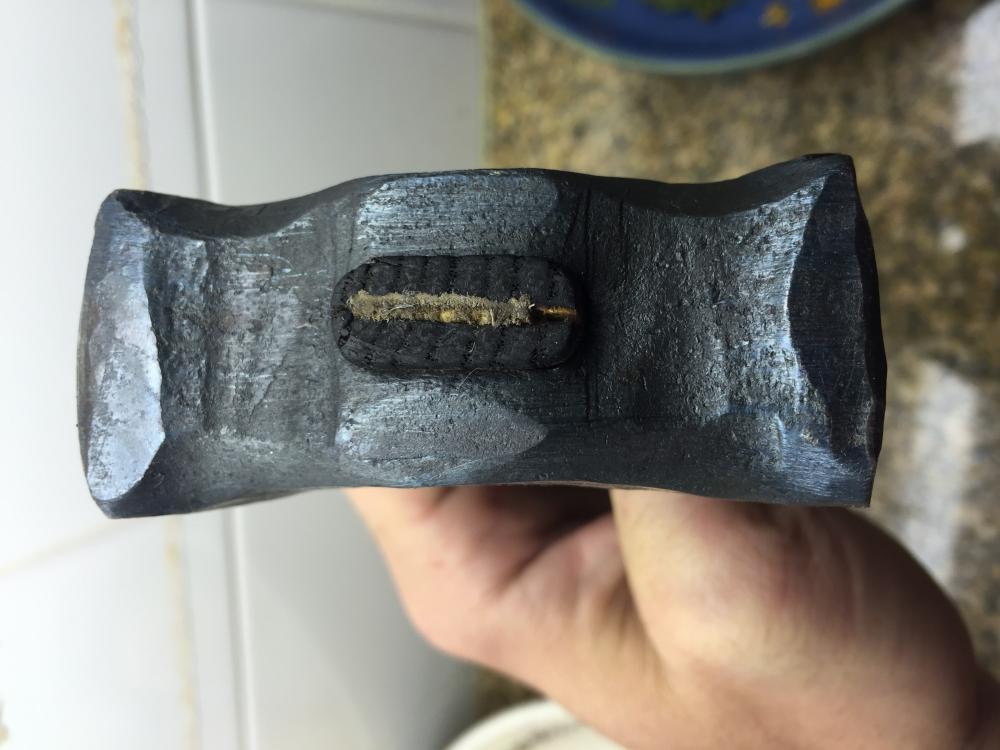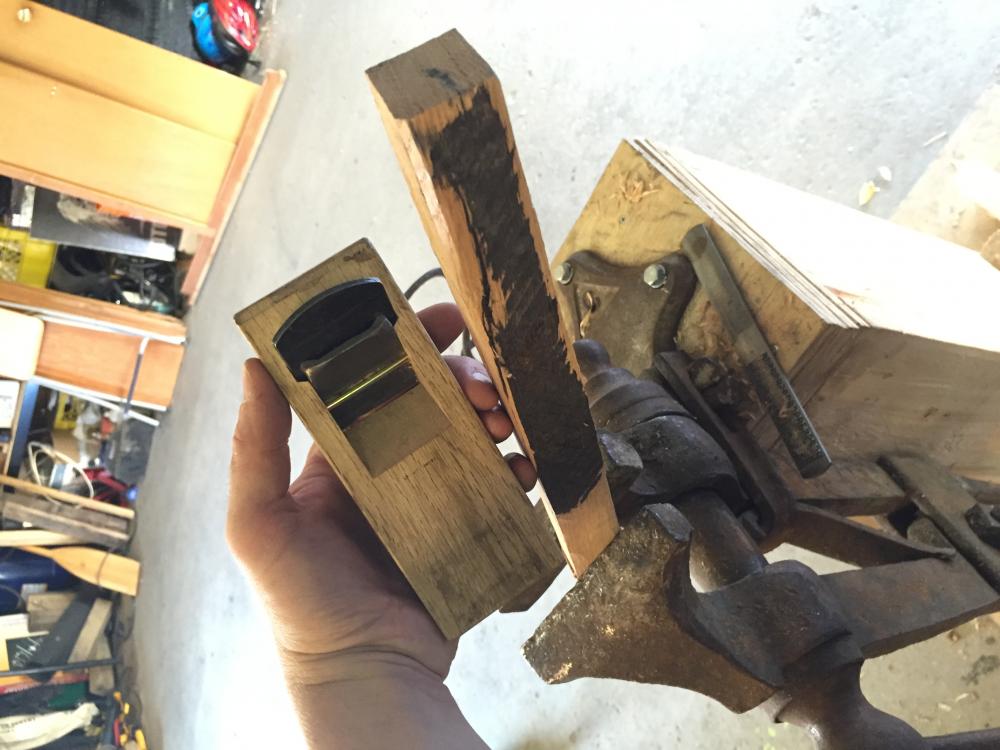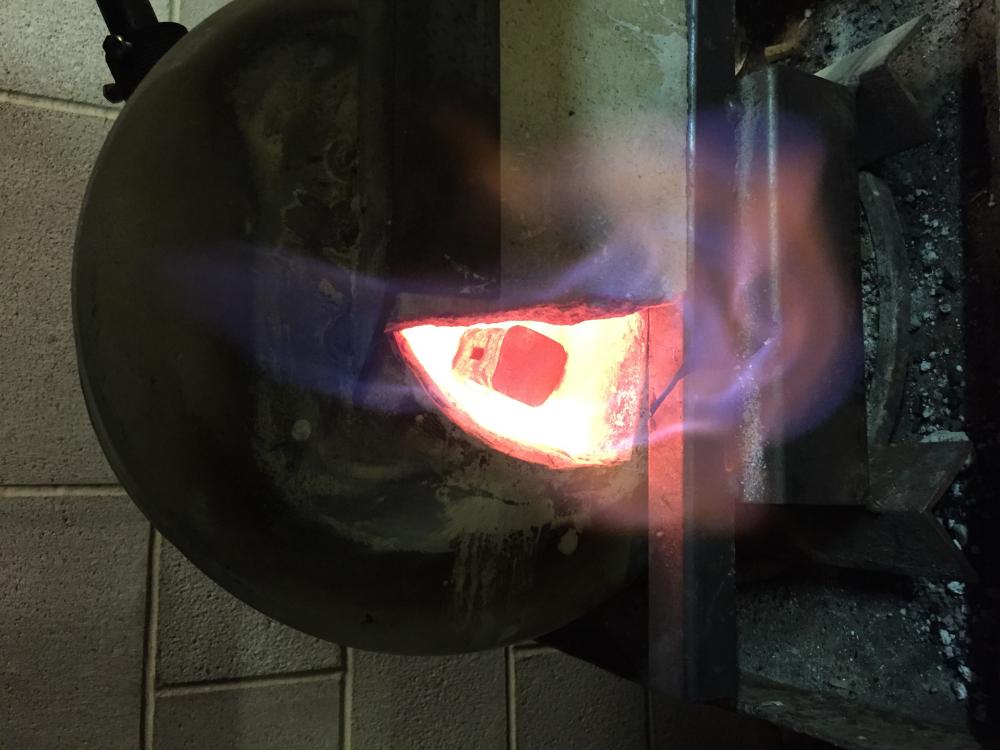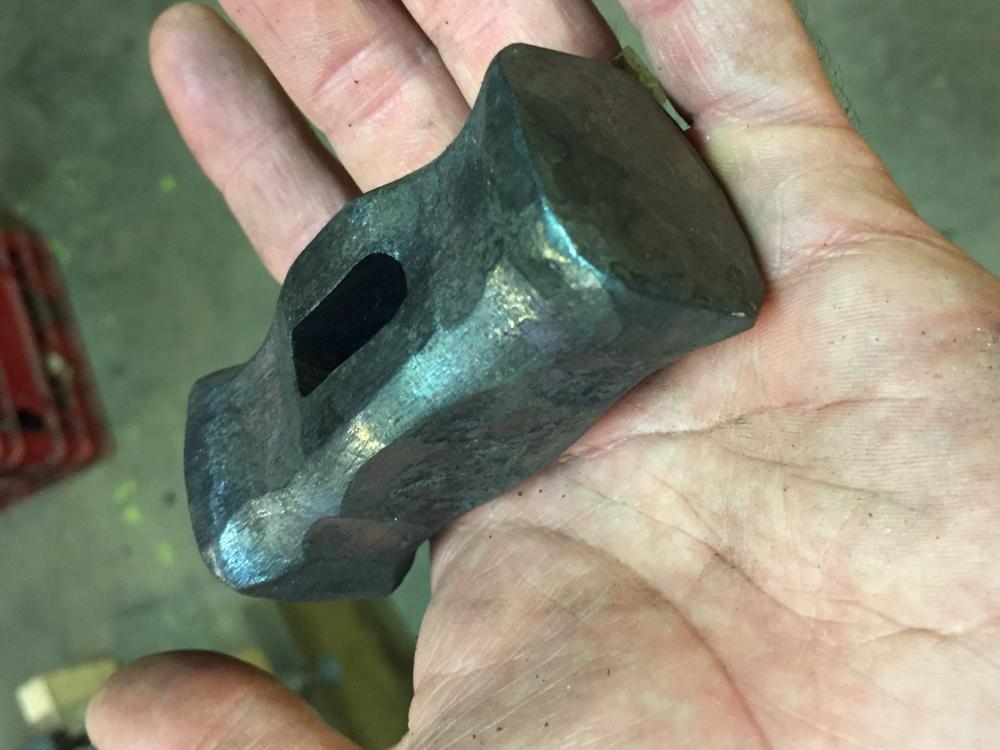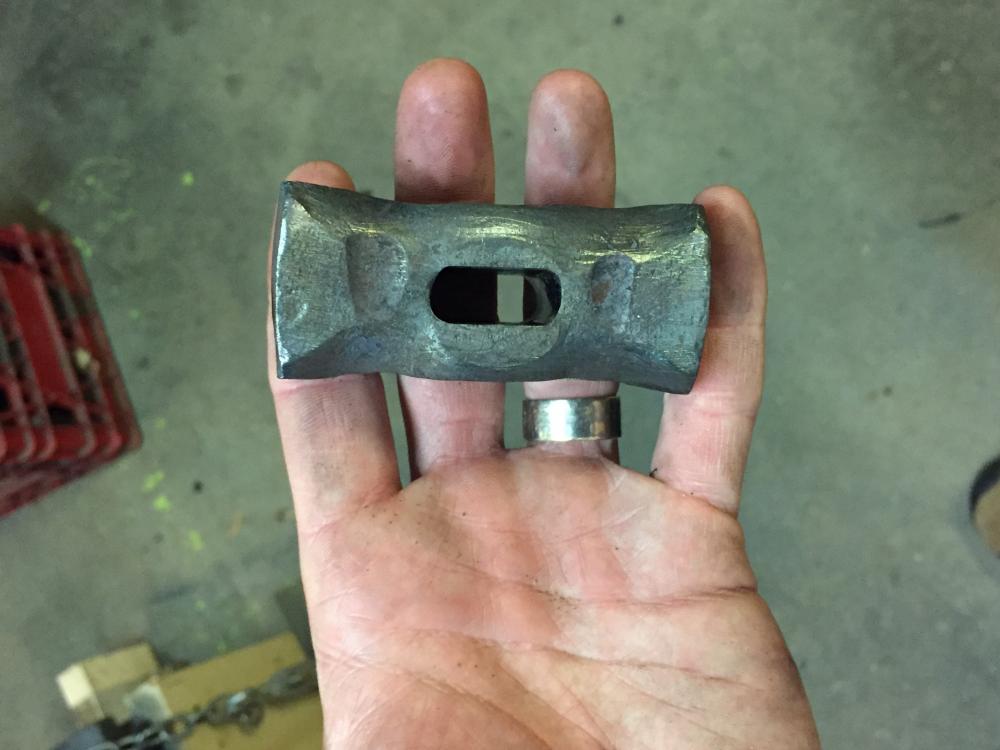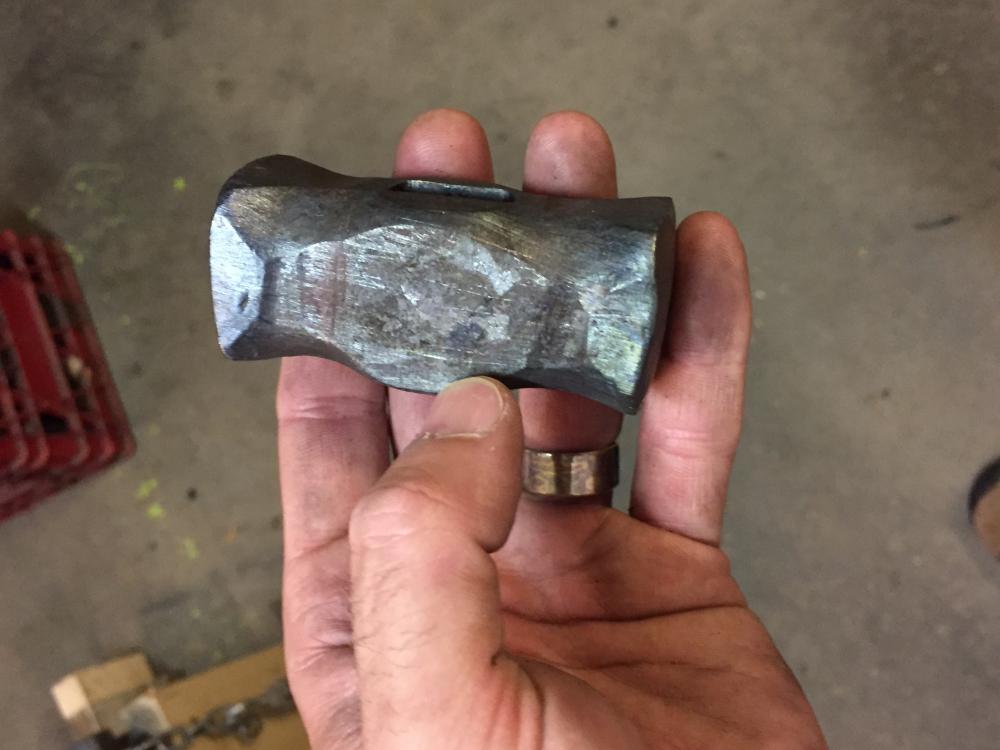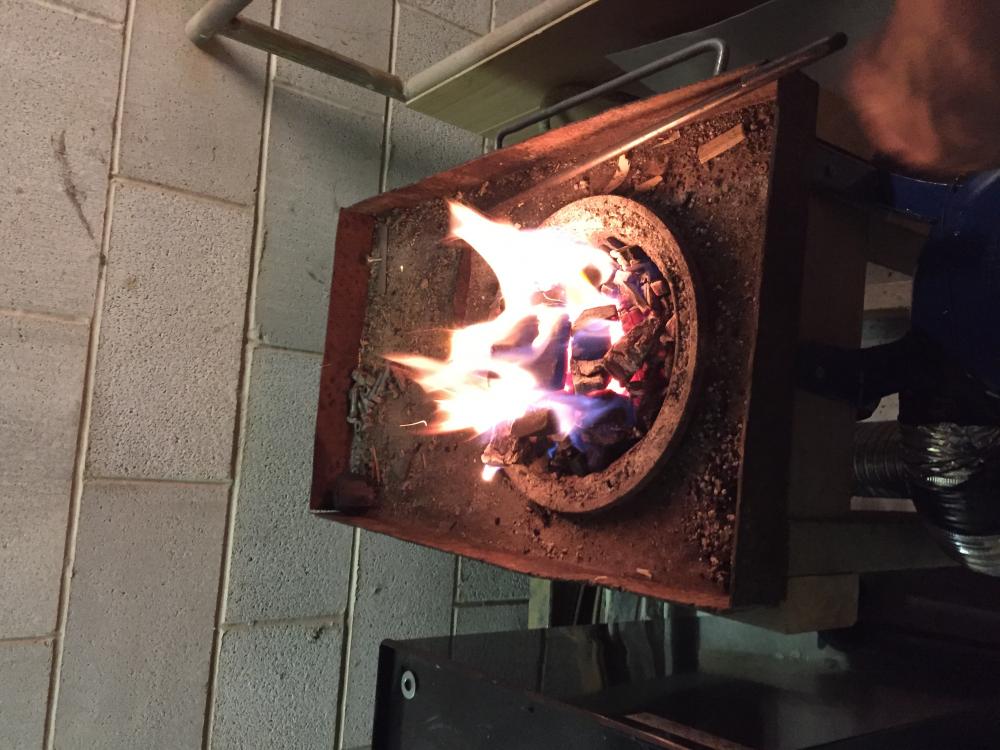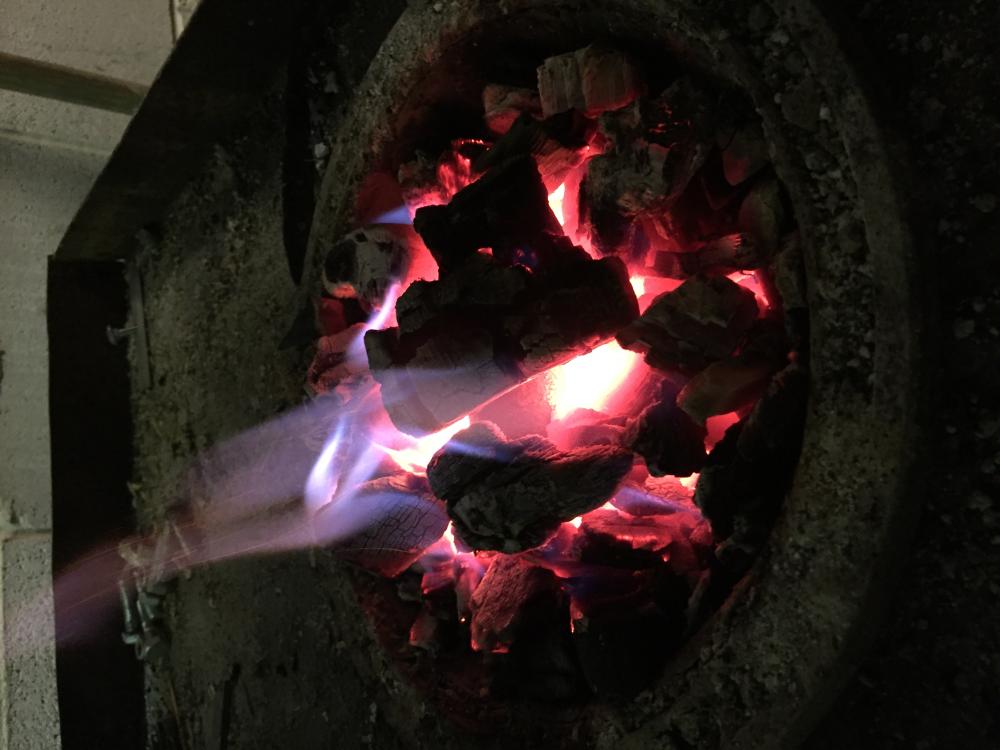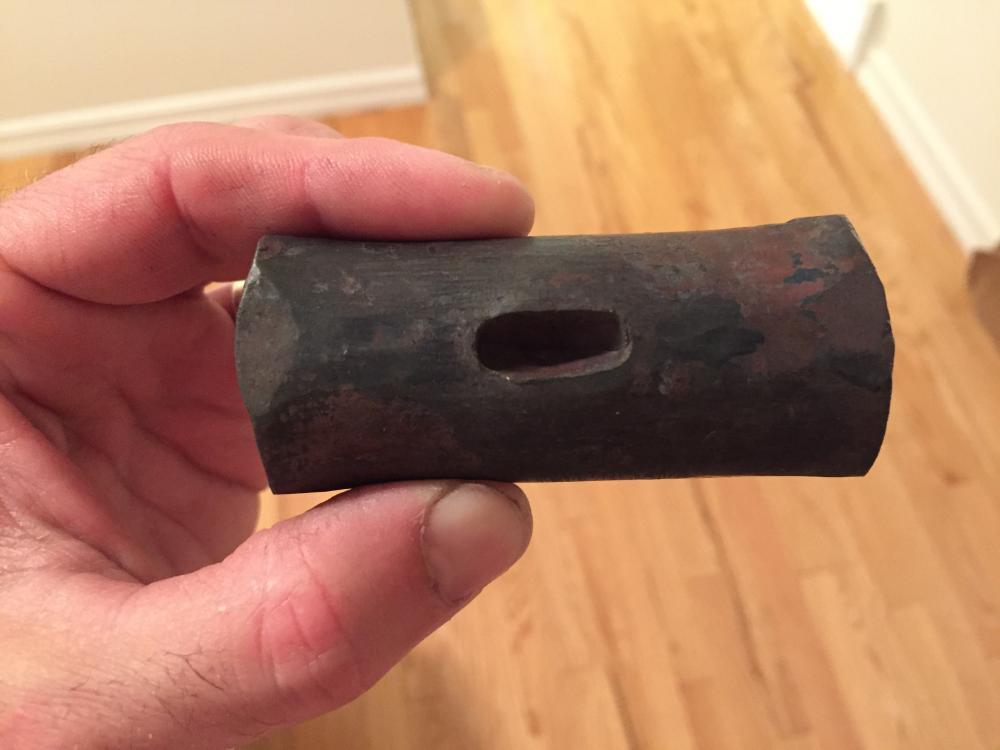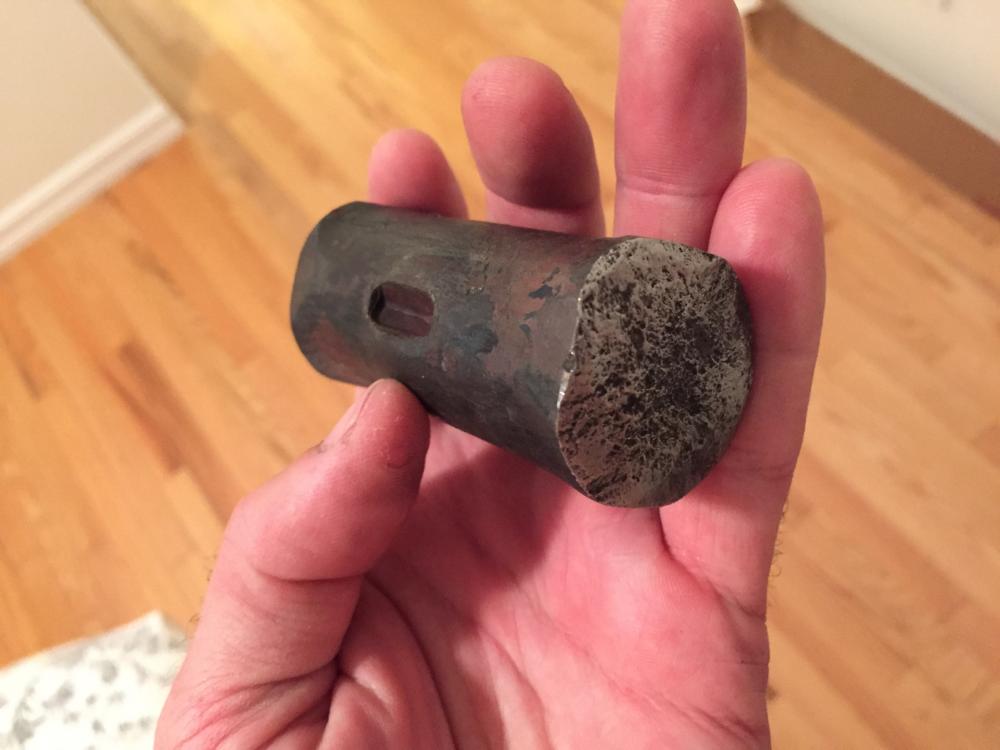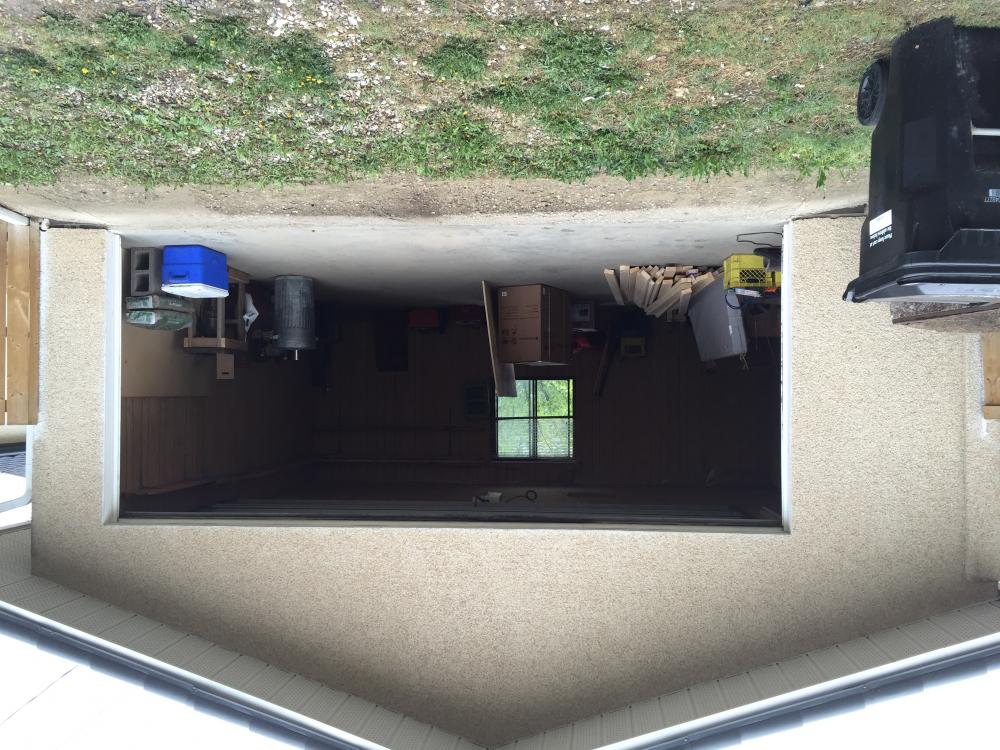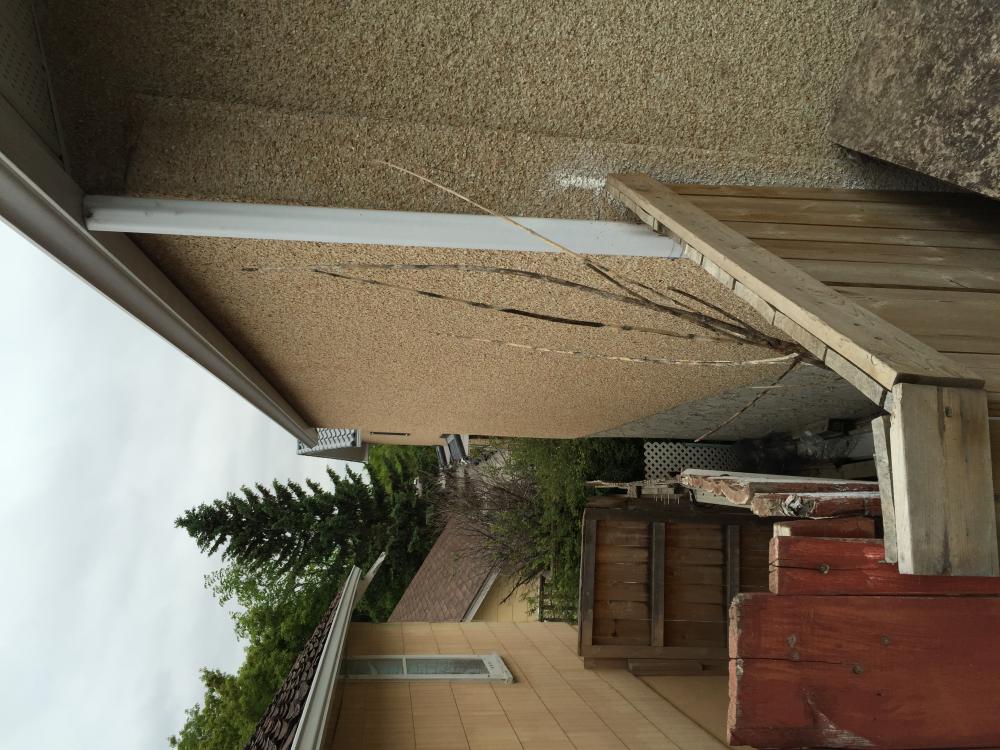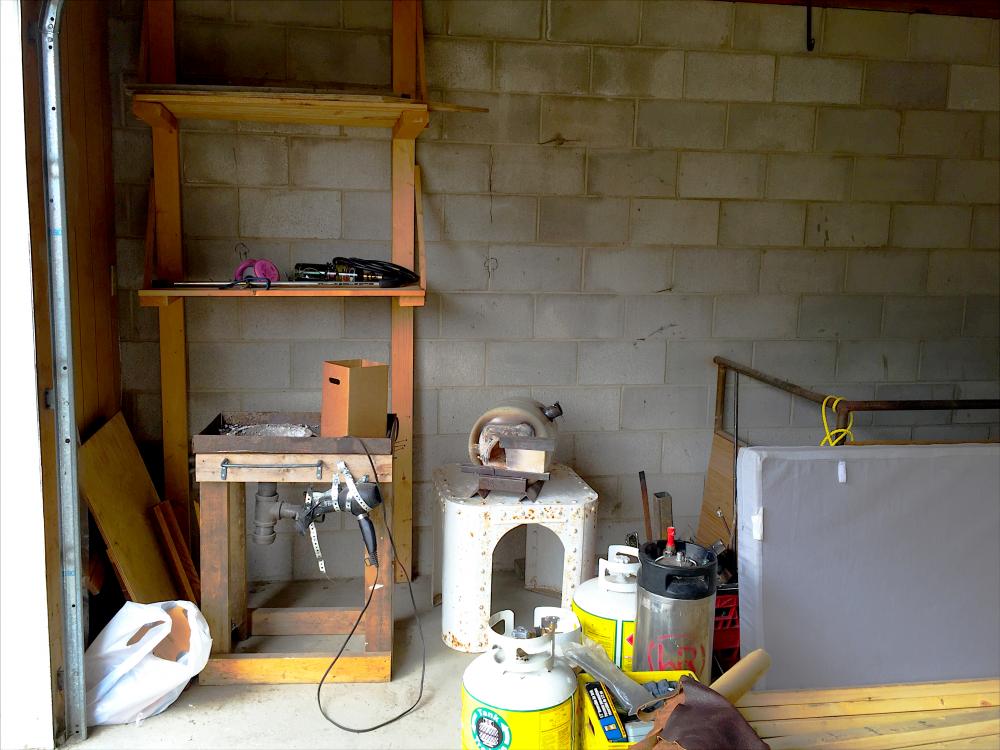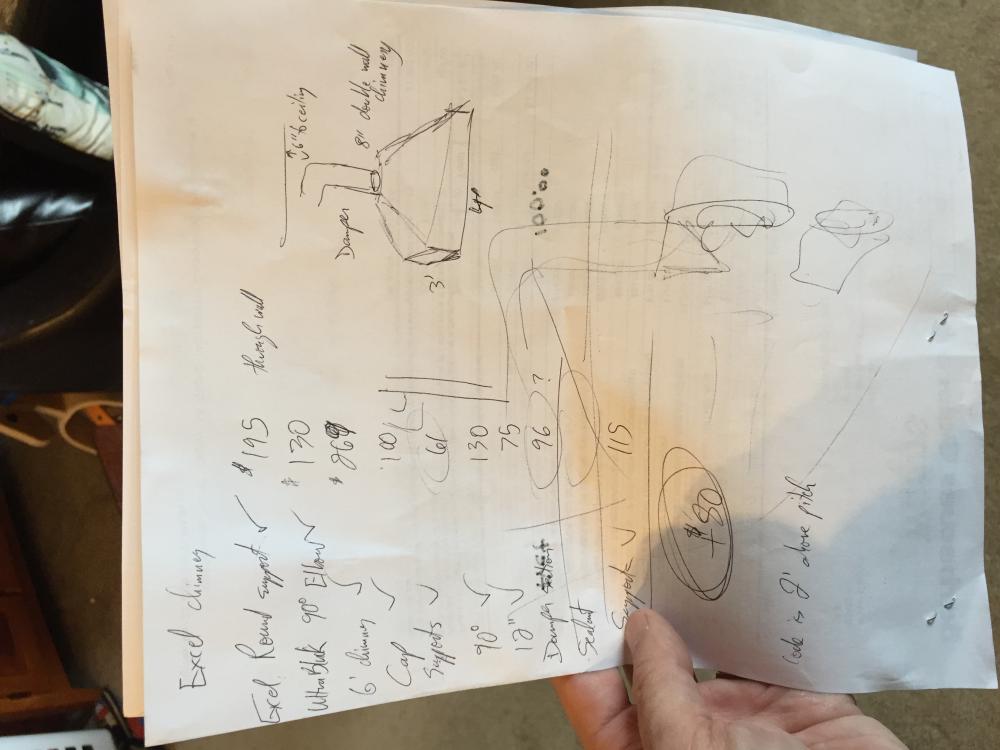
AdamG
Members-
Posts
106 -
Joined
-
Last visited
Content Type
Profiles
Forums
Articles
Gallery
Downloads
Events
Everything posted by AdamG
-
-
I'm starting easy... it's hot rolled mild steel, and soft! Mushrooming already. I may weld on some carbon steel or stainless bar I have on hand. I had written another post but it disappeared.
-
-
Just a couple of punch/drifts. The main one was made of 4140. Gave me a good blister, and took a while by myself. I also made a jig to keep the piece from rolling away.
-
Ok, I finished it yesterday. I cleaned it up a little dimensionally but probably didn't enlarge the eye enough. I used the oak board from the pallet my air compressor came on to make the handle, and shaped it with a hand plane and a push chisel. Then a little 120 sandpaper and a blast with the bernzomatic and some tung oil. There's a split in the handle though, which opened up when I burned it. Hope it's ok.
-
Just thought I would throw this up for posterity. It's mild steel so it will be used for Japanese chisels (wood handle). I tried to forge weld some W2 on the striking ends but failed... I'm just getting started and just getting my forges running (charcoal and gas). i might take another run at this hammer head to clean it up, widen the eye, and maybe even stick weld some stainless or O1 or W2 on the ends. I wanted to stick with the Japanese style, but it's starting to look more like the farrier style rounding hammers.
-
This video gives an idea... https://youtu.be/VWlnad-Vye4
-
Getting closer. Got a quote for proper stainless insulated chimney and a mild steel hood. About $1200 before tax, permit etc. That's 10". Im wondering a couple of things. One: to meet code in a garage the combustion zone has to be 24" above the floor and made of non-combustible material. Might do that. Two: I'm hoping one hood will work for either charcoal or gas forges. Any comments? Unfortunately the super sucker doesn't look like it will work for gas, and I use both.
-
I've got too many projects going at once. New anvil needs a base. Need to move in. Need a chimney. Need a foot pedal and a bit more welding on my WIP power hammer. Got more ambition than time!
-
I'm not sure. I thought they were all 52100. It's a bit big for my equipment right now... don't even have tongs to handle a sphere that size, but I think I would weld on some rebar anyway. I'm only half-way through my move, so it will be a while till I get around to the fun stuff. Another month at least (bathrooms are torn out).
-
Yeah. My buddy gave me an industrial ball bearing that must be 2.5" in diameter... I daren't.
-
One way or another, I can't wait to mash some hot steel!
-
Thanks, all. I don't think it's a fraud because I trust the maker. It was heavily discounted as part of R&D and I may have another way to solve this with the maker, so I'm not mad at this point but I am surprised about the characteristics of the metal.
-
Hi all, I just acquired a brand new anvil that's a bit of a one-off. Before I mention its brand etc, I wanted to ask about hardness and hammer marks on a new anvil face. This anvil was freshly machined at the foundry, apparently from the same type of steel used in railroad wheels (I don't know the recipe). It still has the swirly machining marks and hasn't been dressed yet I will do that as soon as I build a stump/stand. But in testing the rebound, I'm seeing hammer marks left in the surface of the anvil. I haven't had time to look at the depth, or to see whether the depressions are deeper than the machining marks, but I'm surprised that there's any dent from a light (2 lb) machinist hammer, swung lightly to test ring and rebound. I guess my question is whether old anvils with old steels generally act like this. I know most newer anvils with modern high hardness steels should just rebound all the energy and not really dent (unless it's a severe blow). Just doing a gut check.
-
Agreed. Maybe I'll gather the materials and try to build a super sucker, or see if the same shop has any heavier sheet/plate to make one up from the sketch in the stickies. What this won't do is vent the gas forge though. I called a local blacksmith shop and they just open the doors. Fine if it's an open shed, but I don't really like that plan in a garage with the door closed. BTW, does anyone know if the wall thimble would still need clearance between the pipe and wall, given that it's cinder block rather than combustible material? I think they can make something up. Just seems redundant if the wall is 'cinder' rated. It's also going to get darn cold in there in the winter with a 12" heat escape. I'll try to get a damper for sure.
-
Thanks, all. I see that I can get simple black pipe and click them together, and I found a sheet metal place that can do up cheap 26 ga galvanized pipe if that's heavy enough. It seems that this should be an off-the-shelf product though. Anyone know a product by name that has wall penetrations and attic/roof bits etc? And that's affordable?!
-
Thanks, JHCC. What I said was that I was having a hard time sourcing chimney larger than 8" and wondering if a fan blowing air in from the open window would make up for it enough to work. I want it to meet code, even if it's not hooked up to a wood stove. The neighbours across the alley from the garage door look down from the slope into the garage from their yards/decks and are unlikely to enjoy the hammering noise, so a closed garage door sounds like a good idea. Ideally, the solution would accommodate both forges, but even one that works would be great. The stickies in this section have been helpful, and I have read them. I'm hoping not to reinvent the wheel.
-
JHCC, you've got my intention. I planned to slightly pressurize the room by blowing air in to help create the right draft conditions. It seems to be harder to find 10-12" chimney so I was asking about 8". I'll keep looking. I understand the best way for a single coal/charcoal forge is a side draft and wide chimney. I was trying to find ways to accommodate both the charcoal and gas forges from the beginning so I don't ace the charcoal one but totally ignore the monoxide from the gas one.
-
Thanks, I figured that would be the response. Has anyone tried to vent two forges like this before? How do gas forges typically get vented? I have only seen them operate with big doors open, but I would like to keep the garage door closed for heat and noise.
-
Hi guys, I live in Calgary and am about to move into a new house why an awesome garage, but it brings up a few questions. First, I am thinking of building a hood to gather the combusted gasses from both a charcoal brake drum forge and a propane forge. The guy at a bbq shop is suggesting an 8" double walled chimney. The good thing is that it will be pretty close to code (wall penetration and 6 ft above the gutter, about the same height as the peak). He says that because I am not burning wood in a direct vent system a hood is ok. However, on this forum people keep saying 8" might not be enough. I'll post some pics for context. Any informed opinions? Btw, the garage is in a lower area with a hill behind it (fairly protected) and I bought a cheap window fan that I can use to pressurize the garage a bit. The forging area will be tucked on the left side of that garage door, right next to the cinder block wall. There is virtually no overhang (no soffit) as you can see in the pictures. Still looks like over a grand just for the parts, and I need to get a hood custom made by a local sheet metal place.
-
Foot pedal designs for air hammer?
AdamG replied to AdamG's topic in Power Hammers, Treadle Hammers, Olivers
Great designs, guys! I'm in the middle of a move but will print out these pictures for when I'm back in the new shop. Off-topic, my new garage turns out to be a 2-storey garage built into a slope, with a suspended slab for the car parking. I'm a bit nervous about the vibration, but my hammer isn't that big (maybe 30 lbs, with a total weight of about 300 lbs). I'm hoping that a wooden mat made of laminated 2x4s and maybe some foam sheets will help keep the vibration down. I'll also try to fill the vertical tube with gravel & sand once I'm set up. I like that gravity counterweight but I think a spring would be a good safety feature in case something got stuck underneath the counterweight. I'll work something out. Cheers, Adam -
Foot pedal designs for air hammer?
AdamG replied to AdamG's topic in Power Hammers, Treadle Hammers, Olivers
Maybe Ron Kinyon's language on his website scared me off ball valves. I thought that a ball valve was not good enough at throttling, especially at the 'soft touch' end of the spectrum. I guess I'll weld something up. I was hoping for a cheap, ready-made solution that could be extended with a treadle. The 1/2" ball valve I have doesn't have much to grab onto with mounts etc. I may need to pick up some rubber-lined P clamps or something to hold it in place, and make up a treadle from scrap. Thanks, Adam -
Hi all, I am nearly done my air hammer (Kinyon design) but need a decent design for a foot pedal to control the exhaust (1/2" air hose). Could anyone offer pictures, links etc to help? I have bought the 1/4" pedal from Princess Auto in Canada (Calgary) but it is too restrictive. I was going to buy a hydraulic lever-actuated spool valve (orb 8 fittings) but I wasn't sure that was right either. I have a 1/2" ball valve on it now, but I'd need to be an octopus to run this thing without a proper foot pedal. Thanks in advance, Adam
-
Yeah, apparently digital camera sensors pick up some near infrared as well as the visible spectrum, so looking at hot metal makes the image brighter on the sensor even though the radiation is outside the visible range.
- 31 replies
-
- horizontal
- refractory cement
-
(and 4 more)
Tagged with:
